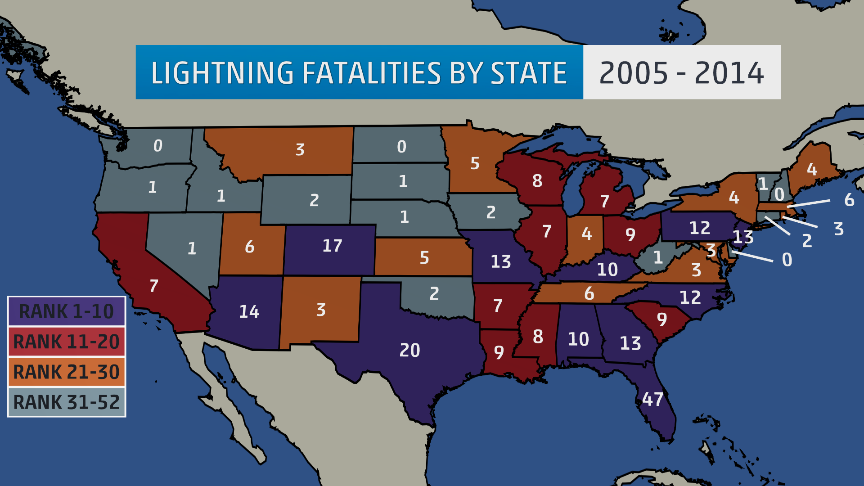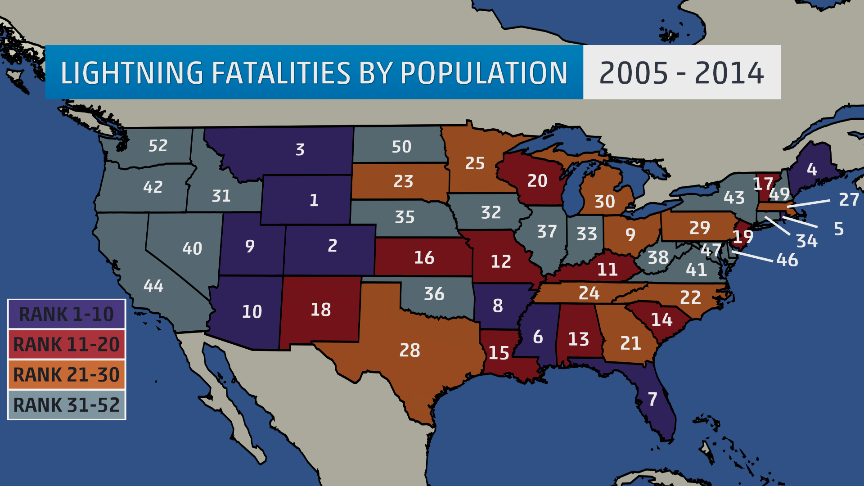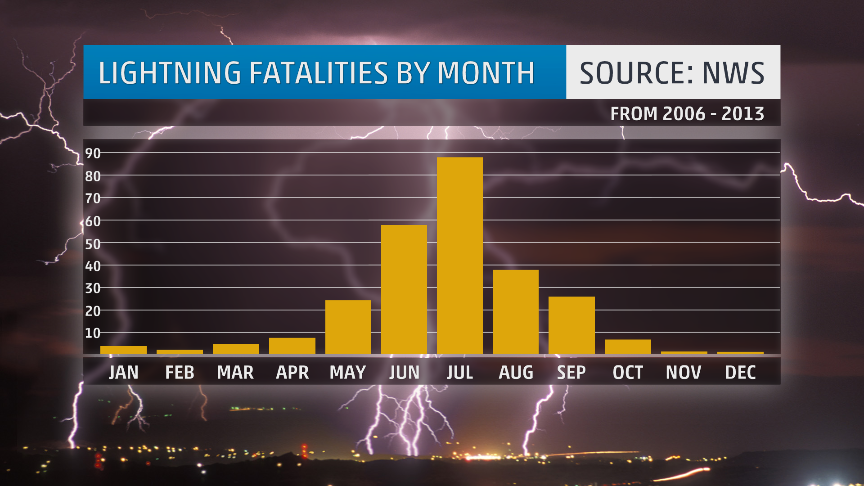
The numbers on the map indicate the number of deaths in each state from 2005-2014. The states are color coded by their rank.
The data was collected by the National Oceanic and Atmospheric Administration (NOAA) and the maps were compiled by Vaisala Inc., operators of the National Lightning Detection Network, which detects cloud-to-ground lightning strikes anywhere in the continental U.S.
The rankings include all 50 states, plus the District of Columbia and Puerto Rico.
This first map plots the number of deaths for each state from 2005-2014. The states are color coded based on their ranking.
Not surprisingly, Florida, with 47 deaths, is the state with the highest total number of deaths due to lightning over the past 10 years. Second place goes to Texas with 20 deaths, and Colorado is third with 17 deaths.
When compared to 2004-2013, the state with the biggest change was Wisconsin, which ranked as 26th with five deaths last year and ranks as 16th with eight fatalities this year.
The states with the most deaths due to lightning are concentrated in the Southeast and Southwest. The Northwest, northern Plains and New England continue to see the fewest lightning fatalities.
Also of note are the number of states that have not reported any deaths due to lightning strikes in the last 10 years: Alaska, Delaware, the District of Columbia, Hawaii, New Hampshire, North Dakota, Puerto Rico and Washington.

The number on the map and color of the state corresponds to the rank of each state based on lightning deaths and population from 2005-2014.
When you factor in the population of each state, the rankings change. Florida no longer holds the top spot. Wyoming has the highest death rate per million people from 2005-2014. Colorado ranks second, and Montana is third.
Of those, Colorado is the only state to place in the top five when factoring the number of fatalities and deaths by population.
The two most noticeable items from this map is that half of the states ranking in the top 10 are in the West and there are two in New England - Rhode Island and Maine. The remaining top 10 states are found in the South.
It is also interesting that the Western states in the top 10 are juxtaposed on both sides, in the northern Plains and toward the West Coast, with states that place toward the bottom of the list.
Additional Lightning Information
An average of 49 people are killed each year by lightning, based on data from 1985 to 2014.
July is the peak month for lightning fatalities, based on data from 2006 to 2013. Not surprisingly, June is the second highest month and August comes in third place. This is due to more frequent thunderstorms in the summer months, as well as more people enjoying time outside. This makes for a potentially deadly combination.
Men account for about 80 percent of lightning deaths in the United States and almost all occur outside. In fact, most victims are engaged in leisure activities, an nearly half of the water-related fatalities are from those fishing. Surprisingly, in the sports-related category, soccer takes the No. 1 spot, not golf.
According to NOAA, the odds of a person being struck by lightning in their lifetime is 1 out of 12,000, but only 10 percent of those struck by lightning are killed. Some are left with permanent disabilities.
When you hear thunder, head inside and stay there for 30 minutes after you hear the last rumble. The best advice comes from the National Weather Service: When thunder roars, go indoors!




Reader Comments
to our Newsletter